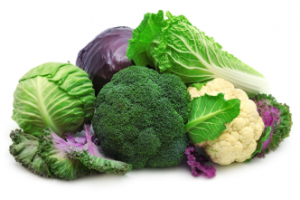Alpha Lipoic Acid (ALA)

Alpha lipoic acid is a vitamin-like compound produced within mitochondria, where it acts as a regulating coenzyme. A form of alpha lipoic acid is found in foods like brewer’s yeast, liver, kidney, spinach and broccoli, but none of the food sources actually raise tissue levels of ALA. Thus, virtually all alpha lipoic acid available today is created in a laboratory.
ALA is a spectacular antioxidant. While some antioxidants like vitamin C work only in water, and others like vitamin E work only in fatty tissues, ALA is both water and fat soluble, meaning that it can work throughout the body. What’s more, it can rejuvenate other antioxidants and potentiates the benefits of alpha ketoglutaric acid (AKG).[i]
And that’s just for starters. Alpha lipoic acid enhances energy production by stimulating AMPK, and as you would guess, also improves glucose disposal, making it a remarkably effective nutrient for anyone with prediabetes, type 2 diabetes or Metabolic Syndrome.
If that’s not enough reason to supplement with alpha lipoic acid, it can also help you lose weight by telling the liver and muscles to burn fat.[ii] Research has also revealed ALA benefits in immunity, strength, endurance and cardiovascular health.[iii]
“Lipoic acid supplementation improved body composition, glucose tolerance, and energy expenditure. Lipoic acid increased skeletal muscle mitochondrial biogenesis with increased phosphorylation of AMPK and messenger RNA expression of PGC-1alpha and glucose transporter-4.”
Wang Y, Li X, Guo Y, Chan L, Guan X. Alpha-Lipoic acid increases energy expenditure by enhancing AMPK-peroxisome proliferator-activated receptor-gamma coactivator-1alpha signaling in the skeletal muscle of aged mice. Metabolism. 2010 Jul;59(7):967-76.
Translation Alpha lipoic acid has been shown in animals and humans to be a potent and multi-faceted metabolic modifier.
NOTE for alpha lipoic acid aficionados: a more potent form of ALA is showing up in health food stores, called R+alpha lipoic acid or r-ALA. This appears to be nearly 100% bioactive, whereas standard ALA is about 60% bioactive. Since the r-ALA is more than double the cost of standard ALA however, Natalie and I continue to use and recommend standard ALA. Importantly, more than 90% of the published human research on alpha lipoic acid has used standard ALA.
[i] Reed LJ. A trail of research from lipoic acid to alpha-keto acid dehydrogenase complexes. J Biol Chem. 2001;276(42):38329-38336.
[ii] Lee WJ, Song KH, Koh EH, Won JC. Alpha-lipoic acid increases insulin sensitivity by activating AMPK in skeletal muscle. Biochem Biophys Res Commun. 2005 Jul 8;332(3):885-91.
[iii] Gorąca A, Huk-Kolega H, Piechota A, Kleniewska P, Ciejka E, Skibska B. Lipoic acid – biological activity and therapeutic potential. Pharmacol Rep. 2011 Jul;63(4):849-58.
Synergy with DIM (Diindolylmethane)
Cruciferous vegetables contain a compound known as indole-3-carbinol or I3C. When ingested, I3C is converted to the active metabolite known as diindolylmethane or DIM.
DHEA is known as the most comprehensive repair signal in human physiology. Synergy with DIM is based on:
- DIM’s ability to enhance DNA repair. I3C and DIM have been found to upregulate DNA repair enzymes, including P53. [1]
- The ability of DIM to stimulate anti-tumor defense mechanisms. [2],[3]
- DIM’s positive influence on sex hormones. In women, DIM has been shown to restore estrogen metabolism to a more youthful (healthy) metabolic pathway. [4] In men, DIM has been shown to inhibit the conversion of Testosterone to Estrogens via the aromatase pathway. [5]
[1] The dietary phytochemical 3,3′-diindolylmethane induces G2/M arrest and apoptosis in oral squamous cell carcinoma by modulating Akt-NF-κB, MAPK, and p53 signaling. Weng JR, et al. Chem Biol Interact. 2012 Feb 5;195(3):224-30. doi: 10.1016/j.cbi.2012.01.003.
[2] Shin JH, et al. Modulation of natural killer cell antitumor activity by the aryl hydrocarbon receptor. Proc Natl Acad Sci U S A. (2013)
[3] Cancer Lett. 2008 Apr 18;262(2):153-63. doi: 10.1016/j.canlet.2008.01.033.
Indole-3-carbinol as a chemopreventive and anti-cancer agent
Jing-Ru Weng 1, Chen-Hsun Tsai, Samuel K Kulp, Ching-Shih Chen
[4] The Journal of Steroid Biochemistry and Molecular Biology
Volume 67, Issues 5–6, December 1998, Pages 413-419
Estrogenic and antiestrogenic activities of 16α- and 2-hydroxy metabolites of 17β-estradiol in MCF-7 and T47D human breast cancer cells
Mona Guptam Andrew McDougal, Stephen Safe
[5] Eur J Nutr. 2013 Aug;52(5):1483-92. doi: 10.1007/s00394-012-0455-9.
Modulation of CYP19 expression by cabbage juices and their active components: indole-3-carbinol and 3,3′-diindolylmethene in human breast epithelial cell lines
Barbara E Licznerska, et al.
